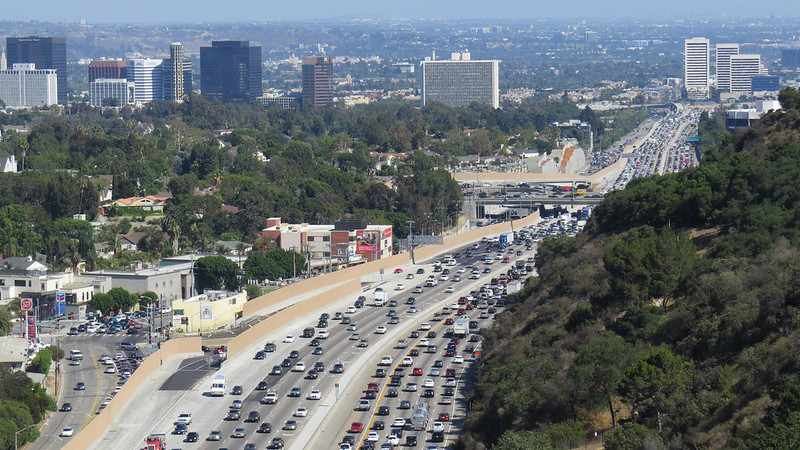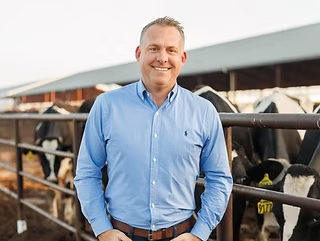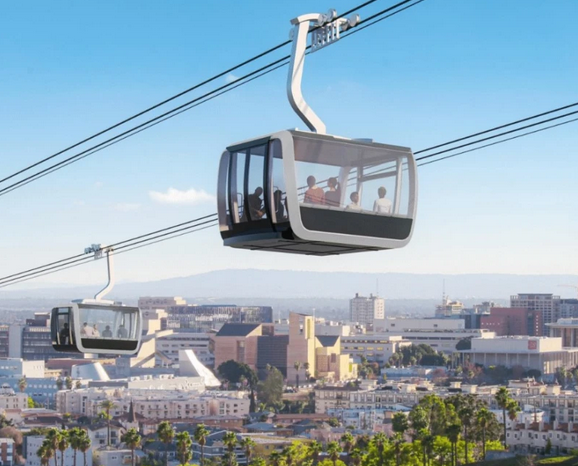Note: GJEL Accident Attorneys regularly sponsors coverage on Streetsblog San Francisco and Streetsblog California. Unless noted in the story, GJEL Accident Attorneys is not consulted for the content or editorial direction of the sponsored content.
Starting Wednesday, at long last, vehicle delay will no longer be considered an impact to the environment under California environmental law. Instead, the amount of driving - rather than the smooth flow of driving - must be measured. This is a more common-sense approximation of the environmental damage from vehicle trips serving new development than mere delay to drivers, but the old way was so entrenched that it has taken years to get to this point.
There are resources for learning more about the issue, besides the many Streetsblog articles that have been posted since before the law making this change, S.B. 743, was passed in 2013. The Office of Planning and Research (OPR), tasked with the job of eliciting and coordinating the many opinions on how to formulate a better impact measure, has a page of frequently asked questions, and much more, here.
Also, Caltrans, which is currently undergoing its own planning to figure out how to apply the new measure to transportation projects, will host a webinar tomorrow, July 1, on "Rethinking How We Build So Californians Can Drive Less."
The webinar will feature a discussion with five dynamic California leaders: OPR Director and Senior Climate Advisor, Kate Gordon, Caltrans Director Toks Omishakin, Central Valley Community Foundation CEO and former Fresno mayor Ashley Swearengin, ClimatePlan Executive Director Chanell Fletcher, and LADOT Director Seleta Reynolds. It will take place via Zoom at 1 p.m. tomorrow; register here.
During the years leading up to tomorrow's implementation date, countless hours have gone into organizing workshops, drafting guidelines, gathering and incorporating feedback, and reaching out to city and regional planners, developers, lawmakers, advocates, and members of the public. There have been many, many opportunities to weigh in and help shape the new rules.
Nevertheless, a last-minute clamor has arisen, demanding a delay, which even goes so far as to use the current pandemic as an excuse to put off implementation for another two years. Many of the objections sound like panic and hyperbole, which may stem from the wonky and difficult-to-parse nature of the issues, no matter how clearly OPR staff and others explain it. It takes a bit of explaining.
Yet reacting in fear, and stoking that fear, is too easy. Recent media posts have featured wild claims that the new law will force everybody to take buses and live in high rises. Several Assemblymembers wrote to Governor Newsom, claiming that the rule would unfairly impact rural communities and drive up the cost of housing. The letter's claim that "the American dream of owning a home" is at risk under S.B. 743 is a perspective that has been pushed by two groups in particular: the California Building Industry Association and The Two Hundred, which claims to represent the interests of disadvantaged communities who, they say, will be priced out of the housing market by this new rule.
But that's not how this works. When S.B. 743 finally goes into effect, long commutes and suburban housing will not suddenly cease to exist. What will happen is that, under California environmental law, the amount of driving that new projects produce will have to be estimated, and if it is excessive, it will have to somehow be mitigated. Shenanigans to sidestep CEQA won't stop, but the focus will shift from the current practice of mitigating congestion by building wider, faster roads - thus encouraging more driving and indeed ensuring it is the only viable way to get around - to finding ways to encourage more sustainable and healthy and less environmentally harmful travel - such as walking, biking, and, yes, transit.
The new rules will make it easier to build housing near transit and jobs, where fewer car trips would be generated, because trying to mitigate for congestion - via wider roads and intersections - is much more difficult and expensive in built-up areas, and that burden will be removed. This can also make investments in sustainable and innovative transportation solutions, like ride sharing and micromobility, much easier for local and regional agencies. Those investments, in turn, can increase accessibility for residents who do not own cars.
Other groups are weighing in with the governor in response to the calls for delay and claims of harm. Joshua Stark at TransForm points out that the new rules will benefit everyone, including car drivers, by reducing driving instead of encouraging ever more traffic as the current practice does. See his blog post, here, for more details.
ClimatePlan, a coalition of groups working on the environment, transportation, and equity, along with the Leadership Counsel for Justice and Accountability and Catholic Charities, sent a letter to Governor Newsom [PDF] which points out deep flaws in the arguments put forth about housing costs.
The changes being made as a result of S.B. 743 are not the cause of California’s affordable housing crisis for low-income communities and communities of color, they write.
The issues that have been raised by CBIA, namely that SB 743 will add to the cost of housing, or entities such as The Two Hundred’s concerns that SB 743 will hurt low-income communities and communities of color are either speculative or simply untrue.
Residents in low income communities and communities of color should not have to choose between affordable housing and how much time it takes them to get to and from work. Ceding to the arguments from The Two Hundred would create this dichotomy. Low-income communities and communities of color would be forced to bear the burden of longer commutes—and spend more of their limited income on transportation—because greenfield development would be their only opportunity for home ownership. They have the right to live where they choose.
More importantly, California should not aid in efforts of re-segregation, where low-income communities and communities of colors are pushed to the exurban fringe because that is the only place where they can afford homes. Finally, low-income communities and communities of color cannot continue to suffer from historic disinvestment because their cities and towns are developed on the outskirts—which stretches infrastructure and transportation dollars that much more. Delaying S.B. 743 could perpetuate these historic inequities.
But the new rule is no panacea, they add. Other coordinating policies are also needed.
California needs to invest in a number of policies to ensure that low-income communities and communities of color have access to the housing they want. Making it easier to create community land trusts, ensuring sustainable funding sources for affordable housing, developing strong tenant protections, and advancing legislation such as A.B. 1279 (Bloom) which promotes housing production in high-opportunity areas—these are the solutions that must be implemented alongside S.B. 743. Partnering with statewide housing groups such as Public Advocates is also essential to advance holistic housing and transportation solutions.






